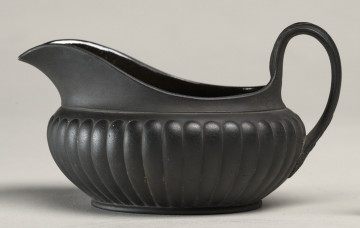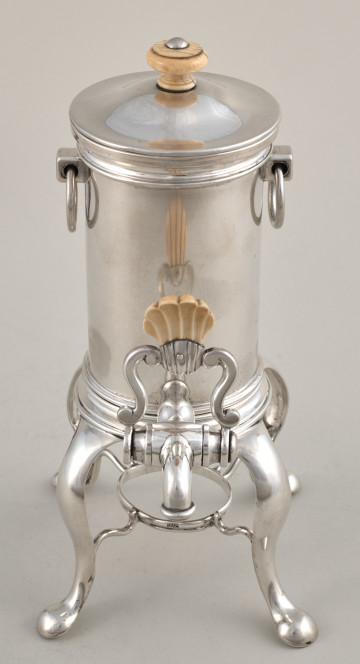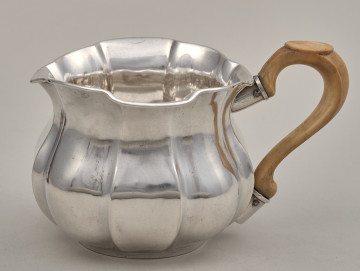
Milk vessel
19th (?) century
Castle Museum in Łańcut
Part of the collection: European enamelworks
A salt cellar in the shape of a flat bowl with a broad collar, founded on a disproportionately thick leg spreading downwards, with a sash in the shape of a half-roller almost in the middle of its height. The entire surface of the salt cellar is covered with enamel en grisaille against a black background with gildings. The leg bears images of races of knights on horses, a naked satyr and a knight standing on a low pedestal. The salt bowl is decorated with the bust of a woman in a helmet, in profile facing left, with exposed breasts, and set in a decorative frame with two satyrs and a pair of putti.
In the 16th century, salt cellars were an important part of table etiquette. They were usually placed in front of the most important person, and a small amount of expensive spice was served in them. Because of the high price of the ingridium being served, these were decorative vessels of quite distinctive size, often made of valuable raw materials. The silver ones usually had gilded bowl bottoms to prevent the fast corrosion of the vessel. The bowl of salt was often covered with various kinds of canopies or other forms of “roofing”.
On the basis of scarce original information, we can suppose that the collection of Limoges enamels in Wilanów was presumably created by Aleksander Potocki.
The salt cellar was shown to the Warsaw audience during An Exhibition of Antique and Art Objects in the palace of Count August Potocki and his wife at Krakowskie Przedmieście 32 (today the Museum of the University of Warsaw) in 1856. It is described in the catalogue of this exhibition under item 794.
Joanna Paprocka-Gajek
Dimensions
entire object: height: 10,0 cm, width: 12,8 cm
Technique
enamel
Material
copper
Owner
Museum of King Jan III's Palace at Wilanów
Identification number
Location / status

19th (?) century
Castle Museum in Łańcut

19th (?) century
Castle Museum in Łańcut

19th (?) century
Castle Museum in Łańcut
DISCOVER this TOPIC
Castle Museum in Łańcut
DISCOVER this PATH
Educational path